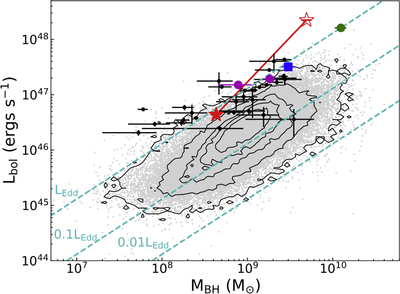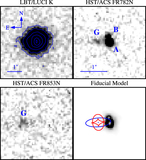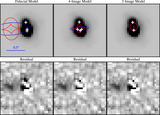Image Details

Caption: Figure 2.
Distribution of quasar bolometric luminosities and SMBH masses estimated from Mg II emission. The open red star represents J0439+1634 without lensing correction; the filled red star represents the same object after applying a lensing magnification correction factor of 51× (from the fiducial lensing model in Table 1). The green circle represents SDSS J0100+2922 at z = 6.30 (Wu et al. 2015), the blue square SDSS J1148+5251 at z = 6.42 (Fan et al. 2003), and the magenta circles ULAS J1120+0641 at z = 7.09 (Mortlock et al. 2011) and ULAS J1342+0928 at z = 7.54 (Bañados et al. 2018). Black dots denote other z ≳ 6 quasars (Wu et al. 2015; Mazzucchelli et al. 2017). The black contours and gray dots show SDSS low-redshift quasars (Shen et al. 2011; with broad absorption line quasars excluded). The error bars represent the 1σ measurement errors. For comparison, the dashed lines illustrate fractions of the Eddington luminosity.
Copyright and Terms & Conditions
© 2019. The American Astronomical Society. All rights reserved.






